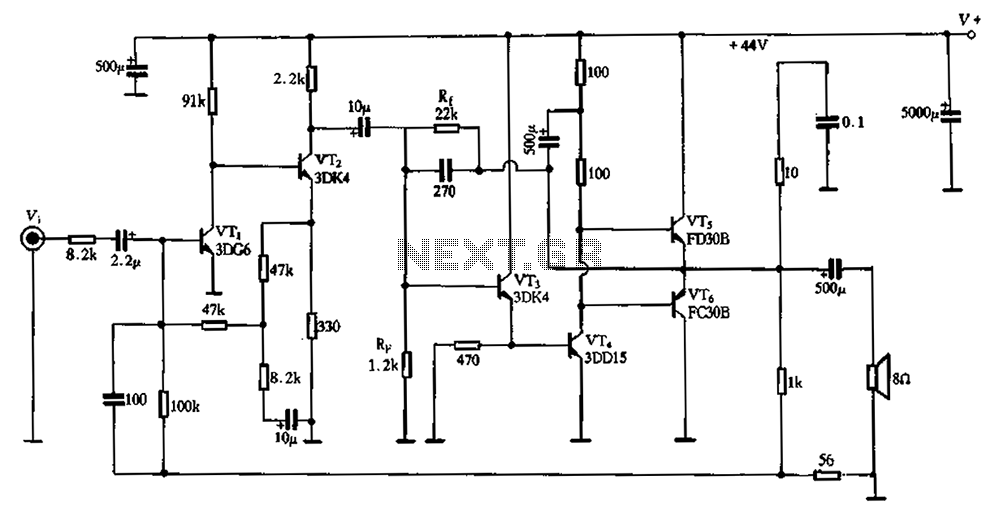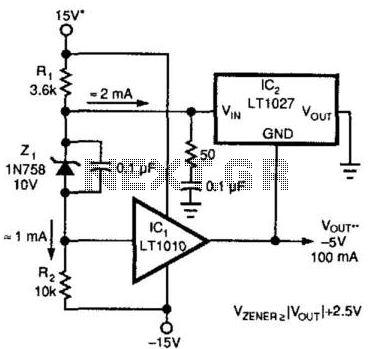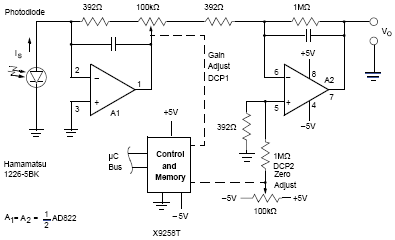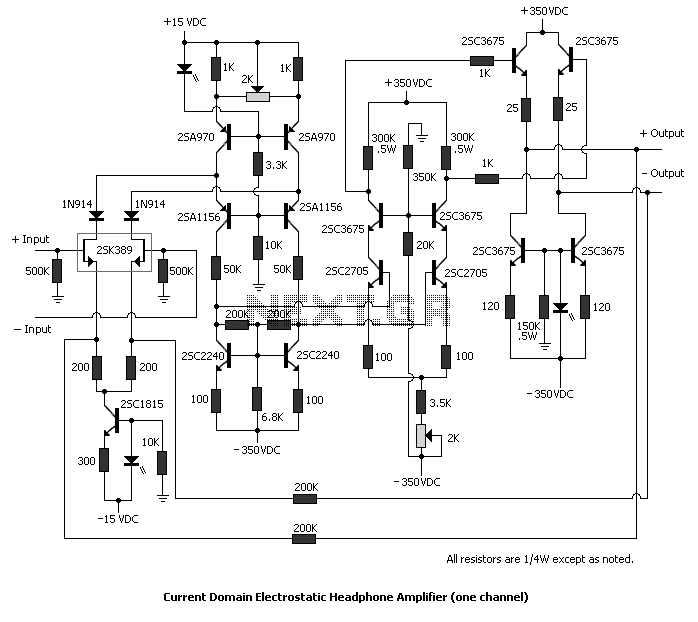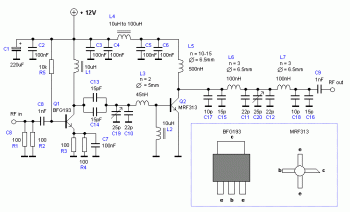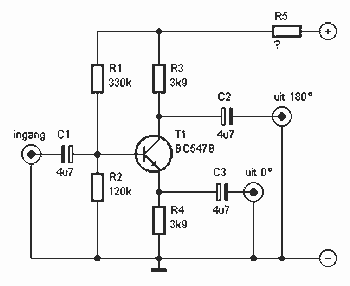
Low Power Amplifier LM386

A power amp designed for use in low voltage, especially battery-operated, applications. For minimum parts count, C1 and C2 can be omitted. More: With pins 1 and 8 open circuit the gain in internally set to 20 dB.
The described power amplifier is intended for low-voltage applications, making it suitable for battery-operated devices where efficiency and minimal component count are critical. The design allows for the omission of capacitors C1 and C2, which simplifies the circuit without significantly affecting performance. This feature is particularly advantageous in portable applications where space and weight savings are essential.
The amplifier's gain is internally set to 20 dB when pins 1 and 8 are left open-circuit. This pre-set gain level ensures that the amplifier can provide a consistent output suitable for various input signals without requiring external adjustments. The configuration of the amplifier likely includes a feedback network that stabilizes the gain and enhances linearity, contributing to improved audio quality in applications such as portable speakers or low-power audio devices.
The circuit may incorporate additional components such as resistors for biasing and stability, as well as protection diodes to safeguard against voltage spikes, ensuring reliable operation in varying conditions. Given its design for low-voltage operation, the amplifier is likely optimized for low quiescent current consumption, thus prolonging battery life in portable applications.
Overall, this power amplifier is a versatile solution for applications requiring efficient amplification in compact, battery-powered devices.A power amp designed for use in low voltage, especially battery-operated, applications. For minimum parts count, C1 and C2 can be omitted. With pins 1 and 8 open circuit the gain in internally set to 20 dB. 🔗 External reference
The described power amplifier is intended for low-voltage applications, making it suitable for battery-operated devices where efficiency and minimal component count are critical. The design allows for the omission of capacitors C1 and C2, which simplifies the circuit without significantly affecting performance. This feature is particularly advantageous in portable applications where space and weight savings are essential.
The amplifier's gain is internally set to 20 dB when pins 1 and 8 are left open-circuit. This pre-set gain level ensures that the amplifier can provide a consistent output suitable for various input signals without requiring external adjustments. The configuration of the amplifier likely includes a feedback network that stabilizes the gain and enhances linearity, contributing to improved audio quality in applications such as portable speakers or low-power audio devices.
The circuit may incorporate additional components such as resistors for biasing and stability, as well as protection diodes to safeguard against voltage spikes, ensuring reliable operation in varying conditions. Given its design for low-voltage operation, the amplifier is likely optimized for low quiescent current consumption, thus prolonging battery life in portable applications.
Overall, this power amplifier is a versatile solution for applications requiring efficient amplification in compact, battery-powered devices.A power amp designed for use in low voltage, especially battery-operated, applications. For minimum parts count, C1 and C2 can be omitted. With pins 1 and 8 open circuit the gain in internally set to 20 dB. 🔗 External reference
Warning: include(partials/cookie-banner.php): Failed to open stream: Permission denied in /var/www/html/nextgr/view-circuit.php on line 713
Warning: include(): Failed opening 'partials/cookie-banner.php' for inclusion (include_path='.:/usr/share/php') in /var/www/html/nextgr/view-circuit.php on line 713
